St. Boniface Grows along with Long Island
A new Diocese, a Bigger School and a New Church
In 1959, the Diocesan Commission on Parish Boundaries began its work to provide more realistic borders for the parish. It was eventually decided to increase the St. Boniface boundaries so that Shore Road to Glen Cove Avenue began the northern limit, continuing up “back road hill” to Sea Cliff Avenue, and from there to the railroad tracks. The eastern edge of the parish followed the tracks to Glen Avenue in Glen Head, and Scudders Lane provided the southern border with Hempstead Harbor the western extremity.
Father Fee sensed that it was time to build. The lovely small church built in 1900 seated just over 300; the school, built in 1928, needed more classrooms; the greater number of classrooms would demand more teachers and, hence, more convent space; and the rectory, which had never been large enough, would in any event be demolished if a larger church were to be built.
With Father Fee’s leadership and much work and sacrifice on the part of the St. Boniface lay people, a fund-raising campaign began in 1960. The goal of a quarter-million dollars was quickly oversubscribed. Six additional classrooms were completed within the original school building, an extension providing for thirteen sisters was added to the convent, and an adjacent house was bought and made into a rectory. A new and larger church building was designed and constructed. All of this took until 1964 to complete.
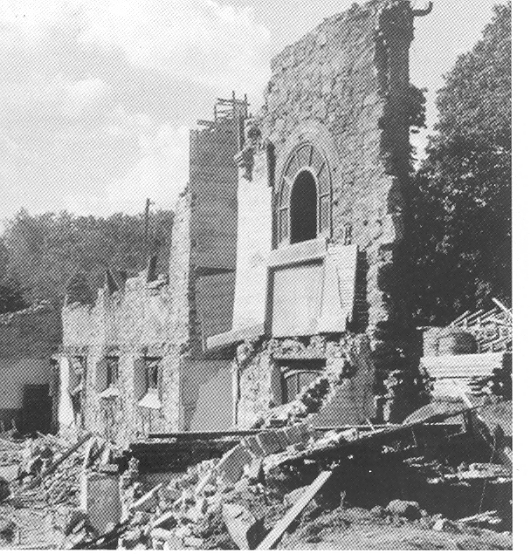
The original Church building being torn down in 1964 .
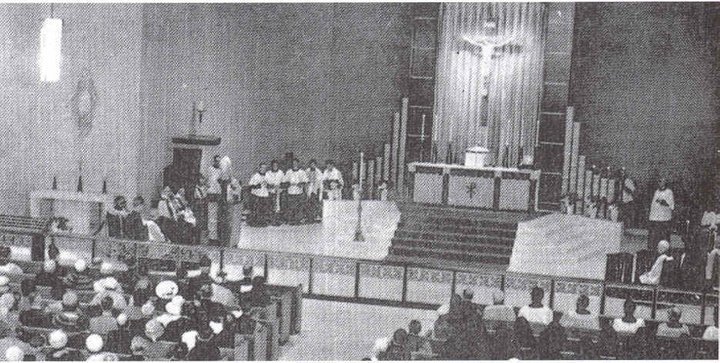
Dedication of the new church building, 1964
Finally, on May 3, 1964, the Solemn Dedication of the new edifice took place. The Most Reverend Walter P. Kellenberg, D.D., Bishop of the Diocese of Rockville Centre, presided.
The Most Reverend Vincent J. Baldwin, S.T.D., V.G., Auxiliary Bishop of Rockville Centre, who had served as pastor in Sea Cliff (1953-56), preached the homily. There were other familiar faces serving as Officers of the Pontifical Mass that day: Right Reverend Monsignor William J. Gately, Assistant Priest; Very Reverend Monsignor Thomas W. Smiddy and Reverend James F. Bradley, Deacons of Honor; Reverend George F. O’Mara, Deacon; Reverend Joseph F.X. Canning, Subdeacon. The Masters of Ceremonies were the Very Reverend Monsignors Francis J. Williams and John R. McGann.
The souvenir program for the day explained very well the rationale for the new church building, and permitted the architects to describe what they thought they had accomplished:
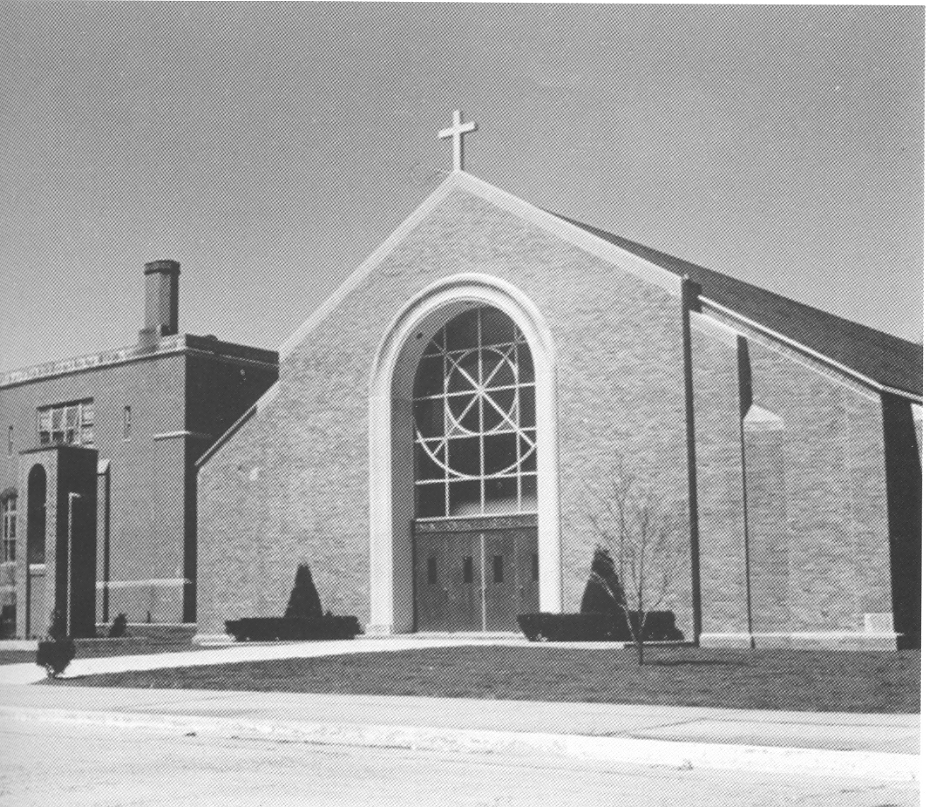
The new church building we dedicate today replaced the old St. Boniface Martyr Church which stood for more than sixty years on the same site. Much local affection was held for the old church which had become a landmark in town…. [P]arish growth demanded an enlarged, more up-to-date church. In the demolition of the old church, Father Fee had hoped that something of the original building might be incorporated in the new design. The original church bell atop the front facade of the old church was in excellent condition and would provide auditory as well as visual memories of the former place of worship. To bridge this old and new, the old bell has been placed in a free-standing bell tower, and has been made automatic, with clock and manual controls inside the new church.
The architects described their use of oak (symbolic of St. Boniface’s having destroyed the Pagans’ sacred tree) in the nave and in the church doors, and of the oak leaf and acorn design in the altar rail, votive stands, lectern and speaker grilles. In great detail they describe the eight stained-glass windows in the transepts which depict “historically accurate events from the life of the patron of the parish”. The four windows in the nave illustrate the Glorious Mysteries of the Rosary and the large entrance window depicts the Coronation of the Blessed Mother as Queen of Heaven and Earth. When the celebration was over it was realized that with the cost of the expansion and of the new buildings and of the purchase of the two adjacent parcels of land, the parish had a $440,000 debt.
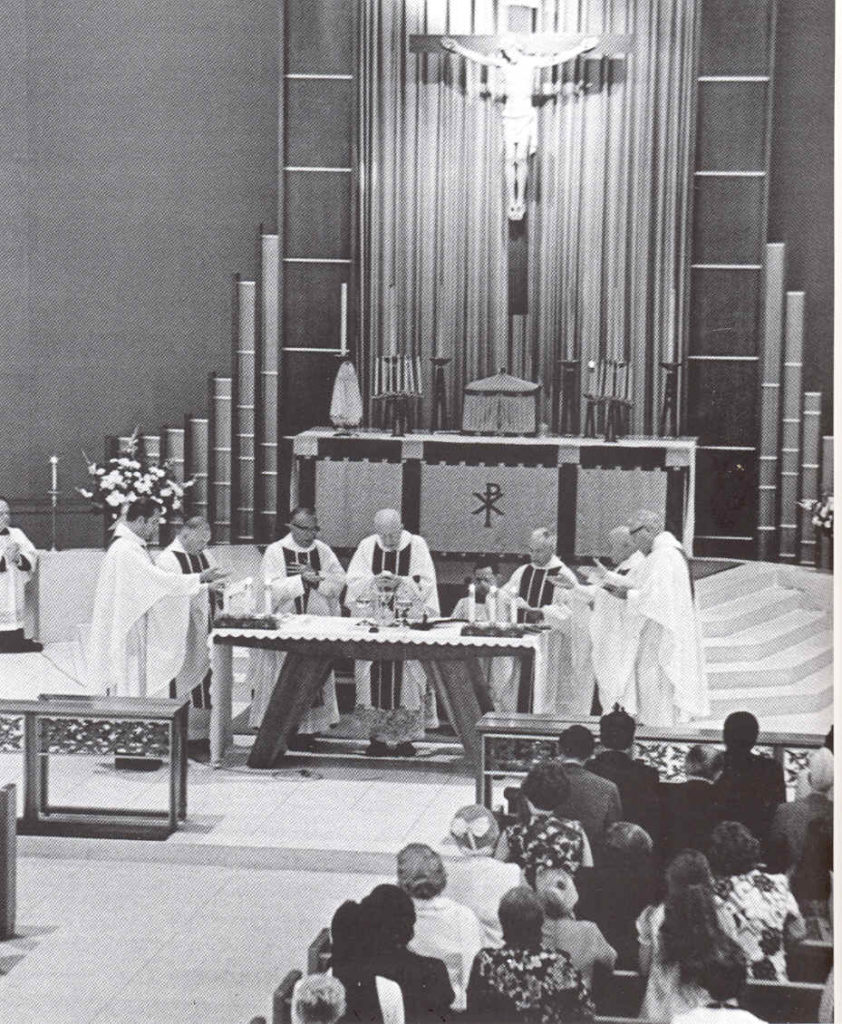
Diamond Jubilee
To celebrate its Diamond Jubilee, the parish began 1973 with a New Year’s Party. Two dinner plates were designed to commemorate the occasion of the 75th Anniversary. A Mass of Thanksgiving was celebrated on Sunday, June 24, 1973, with Bishop Kellenberg as the principal celebrant and with Fathers James Bradley, George O’Mara, Joseph Canning, Hubert Spinner, Thaddeus Semla, and, of course, Father Fee, as concelebrants. Father George O’Mara, who had been associate pastor at St. Boniface from 1935 to 1961, gave the homily. The record shows — reflecting Vatican II — that Joseph Vulpis was the cantor and Robert Bolger was the Lector.
Click here for rare historic photos of our 75th Anniversary Celebration
New Roles for Parishioners After Vatican II
While the physical structure of St. Boniface was expanding, so too was the role of its parishioners. Lay activity had always been a hallmark of the parish, but with the advent of Vatican Council II came the formal changes of a Parish Council, a School Board, and a CCD board composed of laymen and laywomen. These lay efforts continued to be reinforced by those organizations already in existence and the Adult Choir and the Folk Group were added.
A New Pastor, Donald F. Diederich
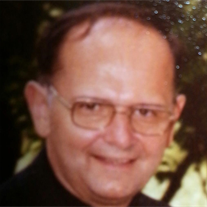
Father Diederich’s pastorate was marked by strong emphasis on the liturgy. “The parish community begins with the Eucharist, and the other sacraments,” said Father Diederich, “and everything else flows from that.” Among his efforts, a successful half-million dollar fund-raising campaign to renovate the church was realized.
The parish continued to prosper and to grow, and as one observer from outside the parish noted, Father Fee played “a dignified and important role in Sea Cliff,” as well as in the St. Boniface community. He was honored by the North Shore Kiwanis Club as “Citizen of the Year” in 1980 and, when he reached the age of obligatory retirement, continued to reside at the parish as Pastor Emeritus. It was then that the Reverend Donald F. Diederich was installed as pastor.
In the fall of 1982 the priests moved to the newly renovated Parish Center, a building that since 1928 had been the convent for the Sisters of Mercy, and the former rectory was rented to the Sisters of St. Joseph.
May 31, 1983, was the 25th Anniversary of Father Diederich’s ordination. Quite secretly, the parish determined to send Father on a pilgrimage to the Holy Land, which he had never visited. Arrangements were made for him to depart on May 22, so he could celebrate a special mass in that most sacred place, on his actual anniversary. On May 15, Father Dederich was honored at a mass and afterward a reception was held in the school auditorium to wish him well.
Father Fee’s sudden death from a heart attack on November 19, 1983, came as a great shock. Sadly, members of the parish said good-bye to their former pastor of 25 years. The funeral mass for the Pastor Emeritus was celebrated with Bishop John McGann as the principal celebrant.
Social concerns were also made more visible by an active Justice and Peace Committee; a parish outreach position was added to the staff and ecumenical ties grew. Social life in the parish was encouraged for the youth by Father Thomas Mulvanerty and, later, paid youth ministers were added. Parish-wide activities such as the Family Luncheon, Country Fair and Service Auction added vitality to St. Boniface’s social life and also to parish funds. A parish census done in 1982, reported 1,447 homes in the parish with 3,902 Catholics.
Sacramental programs involving parents continued to develop under the leadership of Sr. Margaret McPeak, school principal, and Mrs. Ita Levesque, religious education director. Parishioners now helped prepare engaged couples for marriage and new parents for their children’s baptisms. A Mass of Anointing of the Sick and a Marriage Renewal Mass became part of the annual parish calendar, and in 1987, under the direction of Father Jay Madacsi and Maureen Kelly, the restored Rite of Christian Initiation of Adults (RCIA) was celebrated at St. Boniface for the first time. In September, Father Reginald Camilleri arrived at the parish from Malta.
In June of 1988, after eight years as pastor, Father Diederich left St. Boniface to become pastor at St. James Parish in Setauket and Father David Farley was installed as pastor. Though here for only one year, parishioners knew Father Farley to be a kind and gentle man. He will be especially remembered for leading a parish prayer vigil in the spring of 1989, while a St. Boniface School student lay in a coma after sustaining a serious injury at school. The entire parish participated in the round-the-clock vigil, until the third grader’s life was out of danger. It stands out as a special moment of faith for St. Boniface — the parish’s own miracle.
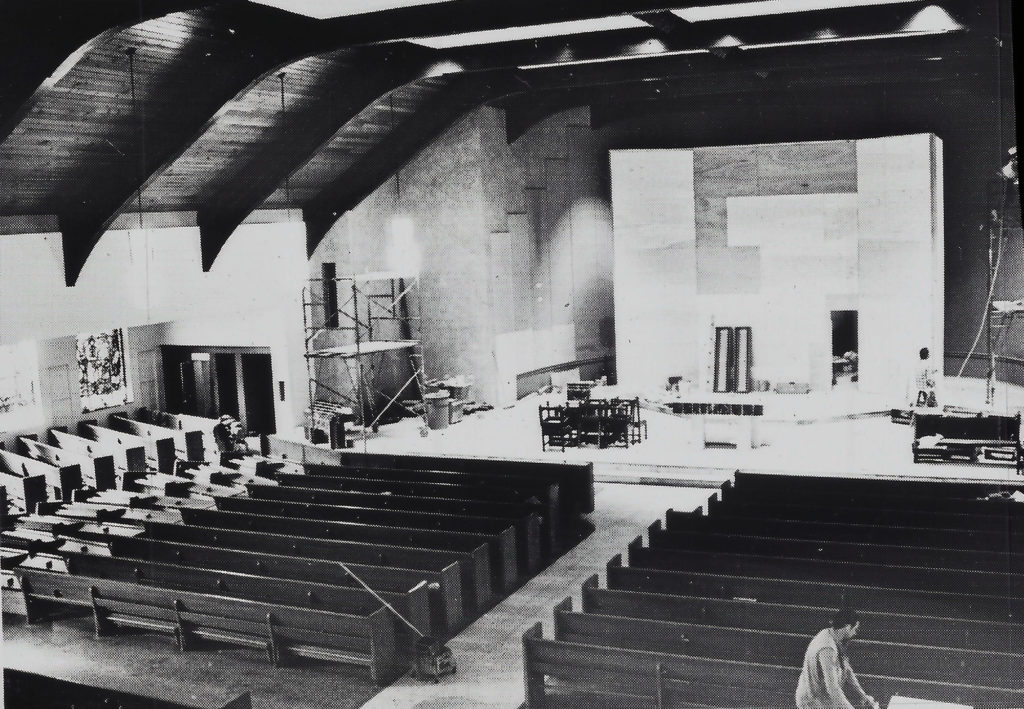
1985 Church Renovation
The renovated church, re-dedicated on March 24, 1985, by Bishop McGann, gave St. Boniface a stronger sense of active participation in the liturgy. Further involvement with music was encouraged, and a musical director was hired. The involvement of scores of Eucharistic Ministers and lectors was also enlisted. Changes in the church itself included removal of the altar rail, creation of a permanent altar facing the people, addition of a wide but shallow sanctuary and a re-positioning of the pews to bring the congregation and celebrant closer together. The original baptismal font was relocated to the sanctuary and the tabernacle was repositioned to a place of prominence in the sanctuary. Architectural history was preserved by refashioning the original marble altars into a single permanent altar, a substantial base for the tabernacle, and the eye-catching face of the ambo. Original oakleaf fretwork from the communion rail adorned the wall above the tabernacle.
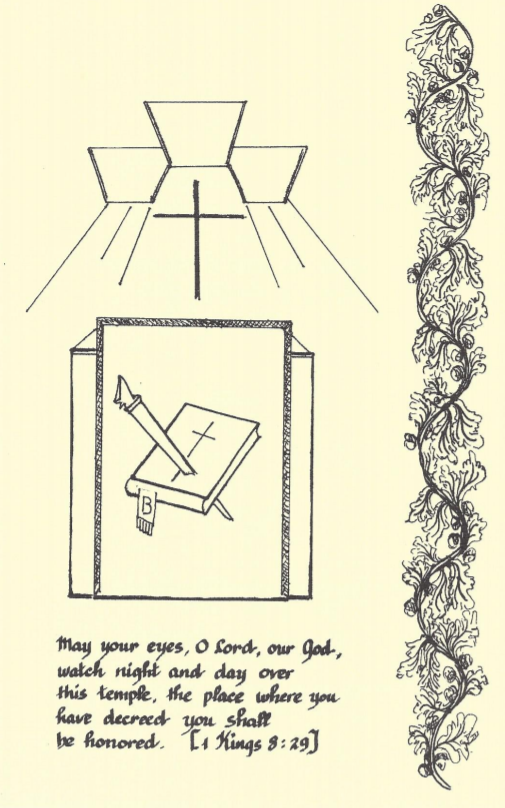





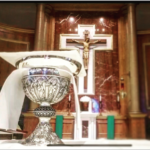



Speak Your Mind